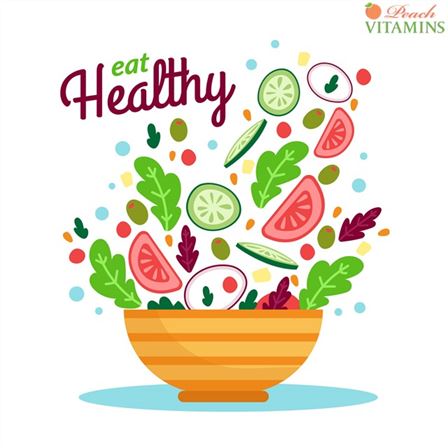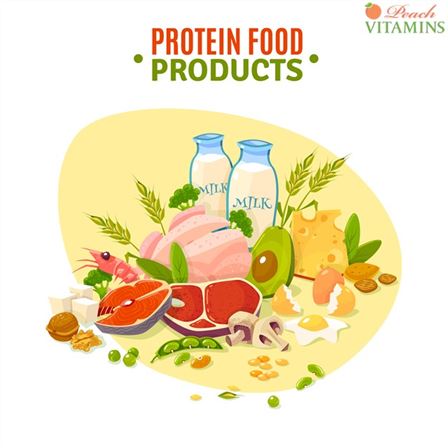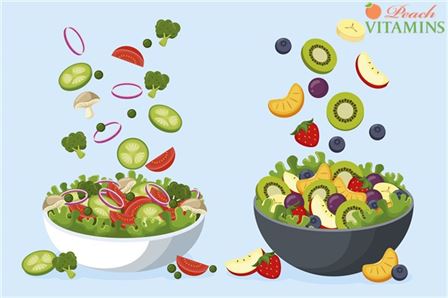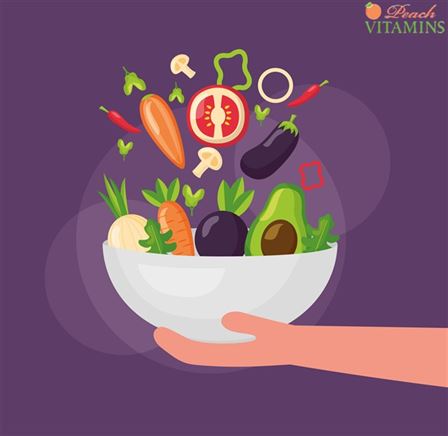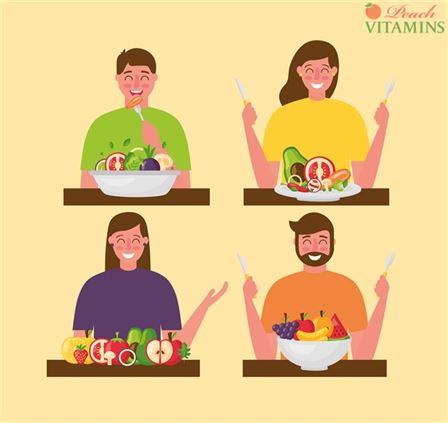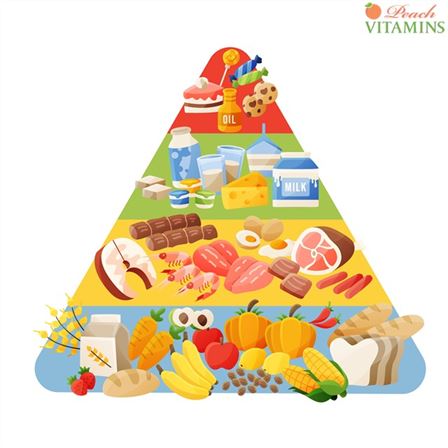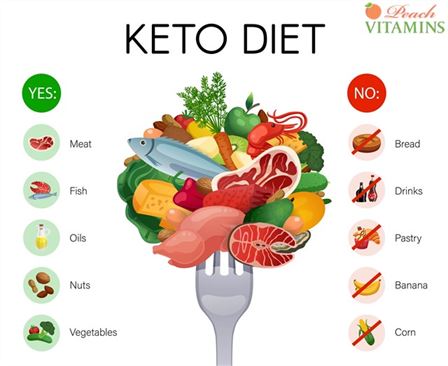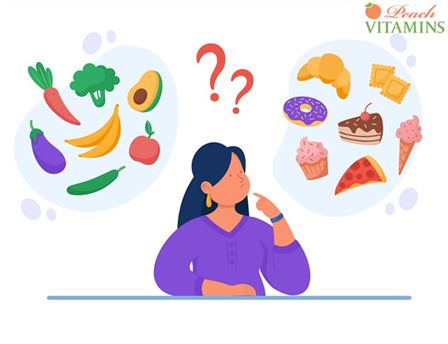We all want to lose weight, right? But what foods help us lose belly fat faster? In this post, I’ll share my top picks for losing belly fat fast, along with 3 meals that keep me full longer and help me stay leaner.
When you’re trying to lose weight, there’s nothing worse than feeling hungry all the time. After eating healthy, you may still feel hungry because your body needs fuel to burn calories.
But when you eat too much, you gain weight. So which foods should you avoid? And which ones will help you lose weight and keep it off?
What Helps With Losing Belly Fat & Why Does Eating Healthy Help Lose Weight?
It’s true that losing weight can be difficult. But there are many ways to lose belly fat without having to starve yourself or exercise excessively. One way is by consuming foods that help burn fat. These include green tea and coffee.
However, drinking one cup of green tea daily can actually boost metabolism and reduce belly fat. Coffee also has some positive effects on the body. This may be because caffeine stimulates the central nervous system and increases metabolic rate.
Eating healthy helps with weight loss goals because your body burns more calories digesting junk food than it does burning calories from a salad. When you consume high-calorie foods, they take up space in your stomach, making you feel bloated and uncomfortable.
This makes it harder to burn calories while you rest. The good news: You can still enjoy delicious, nutritious foods as part of a healthy diet plan.
Foods that are Good for your Gut Health
Foods that are good for your gut health and burns excess weight include blueberries, cranberries, broccoli, Brussels sprouts, garlic, onions, kale, cauliflower, and apples. They contain soluble fiber, antioxidants, vitamins, minerals, and phytonutrients that support digestion and healthy gut function.
These foods also promote satiety, which means you don’t get hungry again soon after eating them. Foods like these prevent blood sugar spikes and help maintain an ideal weight.
Bad bacteria in our guts can make us gain weight. Your waist circumference is a measure of how much fat you have around your middle. It’s usually measured at the level of the umbilicus—the navel—which is just below the rib cage.
Foods that Fight Inflammation
Foods that fight inflammation include celery, spinach, strawberries, and dark chocolate. They have powerful anti-inflammatory properties.
Sugars are a major cause of inflammation in the body. The best way to avoid sugar is to eat only whole foods—no processed foods or refined sugars. If you’re going to indulge in something sweet, choose organic honey over white sugar. Honey contains a more essential nutrient than white sugar does. Use it sparingly as a natural sweetener for tea and coffee.
Healthy weight loss tips 1: Eat lots of fruits and vegetables.
Fruits and veggies are loaded with fiber, water, and other nutrients that help people feel fuller longer. It’s no wonder why these foods are considered “superfoods.”
They also help lower cholesterol levels. Fiber helps move things through the digestive tract, and it can even regulate blood pressure.
Foods that Help with Digestion
There are many foods that help with digestion, but there are some that have been proven to be particularly beneficial. Here are some of them.
1. Watermelon Seeds
Watermelons contain a substance called citrulline, which is an essential amino acid that helps the body produce more nitric oxide, or NO, in the bloodstream. This can increase blood flow and improve circulation throughout your whole body mass. It also has anti-inflammatory properties, so it’s great for reducing inflammation and pain in joints.
2. Garlic
Garlic contains sulfur compounds that help break down body fat. This can speed up weight loss by helping you burn more calories.
3. Lemon Juice
Lemon juice is filled with vitamin C, which boosts immunity and helps the body recover from illness. In addition, it contains flavonoids, which are antioxidants that protect cells from free radical damage.
4. Broccoli
Broccoli is rich in sulforaphane, a compound that fights cancer by promoting cell death and preventing DNA damage. Studies show that people who regularly consume broccoli tend to weigh less than those who don’t.
5. Citrus Fruits
Citrus fruits like oranges and lemons are packed with vitamin C, which improves immune system response and protects the liver. Vitamin C also plays a role in the production of collagen, making skin look younger and firmer.
The Science of Fats & Carbs
A carb is any carbohydrate-containing food or drink, including bread, pasta, rice, potatoes, corn, fruits, vegetables, beans, dairy products, honey, molasses, syrups, and others. A fat is anything containing saturated fats, unsaturated fats, or trans fats. These include butter, cheese, milk, eggs, meats, poultry, fish, shellfish, nuts, seeds, oils, and other foods.
The first step toward achieving this goal is to understand what a healthy body looks like. This starts by understanding the different cells that make up our bodies. Cells come in two basic forms: prokaryotic (single-celled) and eukaryotic (multicellular). Prokaryotes are bacteria, yeast, and archaea; eukaryotes include all animal and plant cells.
Carbohydrates vs. Protein
A carbohydrate is made up of carbon, hydrogen, oxygen, and nitrogen atoms. It contains no protein or fats. A protein comprises amino acids, which are chains of carbon, hydrogen, and oxygen atoms. Proteins can be found in meat, eggs, dairy products, fish, and other animal sources. They also occur naturally in plants, such as beans, peas, lentils, nuts, seeds, grains, and vegetables. Fats are composed of carbon, hydrogen, nitrogen, and oxygen atoms. Fatty foods include butter, cheese, mayonnaise, oil, and margarine.
Protein is one macronutrient that has been shown to increase fat metabolism. In fact, research shows that consuming protein along with carbohydrates helps boost metabolic rate even further.
Besides being high in fiber and low in sugar, protein is also very satiating.
The ketogenic diet has become increasingly popular recently because it appears to improve blood sugar control without increasing insulin levels. This makes it useful for treating epilepsy, but the jury is still out on whether it works well for other neurological problems. In addition, some people find it difficult to follow, because of its strict nature and high fat content.
There are many ways of eating a low carb or keto diet, but one of the most straightforward (and effective) is called the “ketone approach”. The idea behind this way of eating is that you use exogenous ketones as your primary fuel source – meaning that you ingest them in place of carbohydrates.
Ways to Eat More Vegetables
Eating more vegetables can be challenging if you don’t know how to prepare them properly. Here are some tips to help get you started.
The benefits of eating a varied diet, especially one that includes plenty of fruits and vegetables, have been well documented. But many people find it difficult to eat enough vegetables on their own. This is true for those who live in urban areas where fresh produce may not be as readily available or affordable.
You can take steps to increase your intake of vegetables by preparing them at home with simple techniques. You might even consider growing your own vegetables if you have space.
You should start adding more veggies to your plate every day. Chili peppers, broccoli, cauliflower, carrots, kale, spinach, tomatoes, cucumbers, zucchini, green beans, mushrooms, garlic, onions, leeks, celery, bell peppers, eggplant, radishes, and cabbage are just a few examples of delicious vegetables that you can add to your diet.
Here are three easy ways to enjoy a greater daily intake of vegetables each week.
1. Add Veggies to Your Breakfast
Start planning your breakfast around your favorite vegetables. For example, you could have scrambled eggs topped with sauteed mushrooms. Or you could try a vegetable omelet with spinach, onion, pepper, tomato, and cheese. Another option would be to have a smoothie bowl with yogurt, fruit, nuts, and berries.
2. Try a Side Salad Each Day
If you’re having lunch, try adding a side salad with your main meal instead of bread or potatoes. Choose a colorful mix of greens like romaine lettuce, baby spinach, arugula, endive, watercress, mustard greens, beet greens, and kale. Include chopped raw or cooked vegetables like carrot sticks, red bell pepper strips, cucumber slices, cherry tomatoes, jicama sticks, and sliced yellow squash.
You can also toss in shredded chicken breast, grilled shrimp, grilled salmon, or tuna. Experiment with different dressings such as balsamic vinaigrette, blue cheese dressing, ranch dressing, Italian dressing, Caesar dressing, and creamy avocado-garlic sauce.
3. Make Vegetable Soup
Soup is another great way to incorporate more vegetables into your diet. It’s filling and healthy, and you can make it quick and easy using canned vegetables from the pantry.
For instance, you could try making mushroom soup with cremini mushrooms, white button mushrooms, shiitake mushrooms, and pearl onions. You could also try broccoli rabe (also known as rapini), collard greens, Swiss chard, turnip greens, kale, or other dark leafy greens.
Tips to Keep Your Portion Size Under Control
Eating less can help you lose weight faster. But if you want to keep your portion sizes to moderate amounts, you have to be more strategic about how much you eat. To make sure you don’t overeat, plan by keeping a few tricks in mind.
If you’re craving something sweet, wait at least 15 minutes before having it so you won’t be too excited about eating the rest of your healthy meal. And don’t forget that chewing thoroughly is an art—not only does it aid digestion, but studies show that people who chew their food more enjoy their meals more than those who don’t.
Health benefits for regulating portion size:
Reducing portion size helps you feel satisfied after eating without feeling stuffed. Studies suggest that cutting back on portions may reduce heart health risk factors. Having a health goal in mind when you’re snacking between meals is also helpful. If your goal is to reduce overall bodyweight, it’s important to note that smaller portions are usually more filling — so you don’t need as many calories per serving.
Willpower can also combat health issues during a weight loss diet. A flat belly will require lots of willpower to maintain. However, if you’re able to resist cravings and temptations, you’ll be able to achieve your goals faster.
Drinking plenty of water can also help you burn more calories throughout the day. Lean muscle mass burns more energy than fat, meaning that simply staying hydrated can help you shed pounds.
Stop Emotional Eating
Your energy metabolism may slow down when you’re stressed out. You might find yourself feeling exhausted all the time, and this can lead to weight gain. Regulating your stress level is essential to maintaining a healthy weight.
When you’re stressed, your brain releases a stress hormone called glucocorticoids, which suppress appetite. When you’re relaxed, however, these hormones cause hunger.
In addition, cortisol causes your body to have extra belly-fat storage around your stomach area. So, if you’re trying to lose belly fat, it’s important to regulate your stress levels.
Best Meals To Lose Belly Fat: Final Thoughts
The best meals for losing belly fat include lean protein, complex carbohydrates, and good fats. These three categories provide the nutrients to build lean muscle and stay full longer. They also promote better blood sugar levels and improve metabolism.
The bottom line? When choosing what to eat, focus on whole foods that contain all three macronutrients. The right balance of these essential nutrients ensures optimal health, and a toned tummy!
We hope this guide helps you reach your fitness goals with these weight loss foods. Scheduling a one-to-one consultation with nutritionist Cosmic Mike can also help you identify which foods work best for your body weight and lifestyle.

